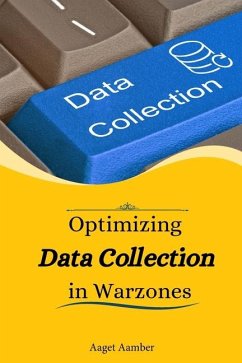Optimizing data collection in warzones is a critical task that requires careful planning and implementation to ensure that accurate and useful data is gathered. The unique challenges of warzones, including security concerns, limited resources, and often unpredictable conditions, make data collection a complex and challenging process. However, optimizing data collection in warzones is essential for improving decision-making, reducing civilian casualties, and ensuring effective military operations. The first step in optimizing data collection in warzones is to identify the specific information that is needed. This could include information on enemy movements, civilian populations, infrastructure, and other key factors that impact military operations. Once this information is identified, it is essential to develop a clear plan for gathering this data, taking into account the specific challenges and limitations of the warzone. One critical consideration in optimizing data collection in war zones is security. Collecting data in a warzone can be extremely dangerous, and it is essential to take steps to protect both data collectors and the data itself. This may include using encryption, secure communication channels, and other tools to ensure that sensitive information does not fall into the wrong hands. Another key factor in optimizing data collection in warzones is resource management. Resources in war zones are often limited, and it is essential to make the most of the resources that are available. This may involve leveraging existing infrastructure, such as local communication networks or satellite imagery, to gather data more efficiently. In addition to security and resource management, optimizing data collection in warzones requires a flexible and adaptable approach. Conditions in war zones can change rapidly, and it is essential to be able to quickly adjust data collection strategies in response to changing circumstances. This may involve using a variety of data collection methods, such as drones, satellites, ground sensors, and human intelligence, to ensure that the most accurate and useful data is gathered. Finally, optimizing data collection in war zones requires a clear understanding of the ethical considerations involved. Collecting data in warzones can be a sensitive and controversial issue, and it is essential to ensure that data is collected in a way that respects human rights and international law. This may involve working closely with local communities and organizations to ensure that data is collected in a way that is sensitive to local culture and norms. In conclusion, optimizing data collection in warzones is a critical task that requires careful planning, resource management, and ethical considerations. By gathering accurate and useful data, military operations can be more effective, civilian casualties can be reduced, and decision-making can be improved. However, it is essential to approach data collection in war zones with caution and sensitivity, taking into account the unique challenges and limitations of these environments.







